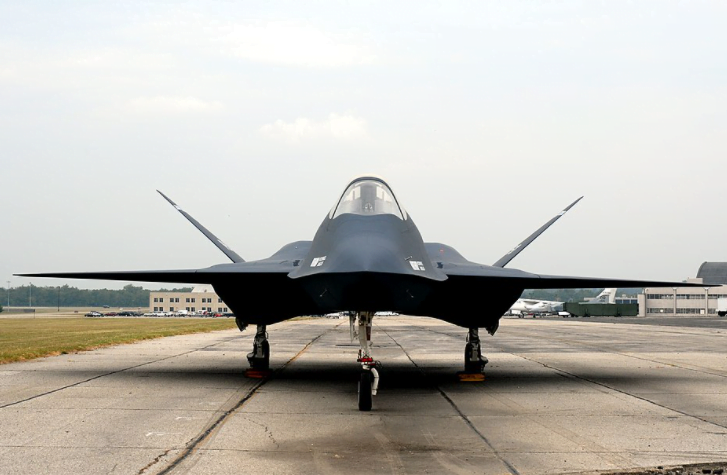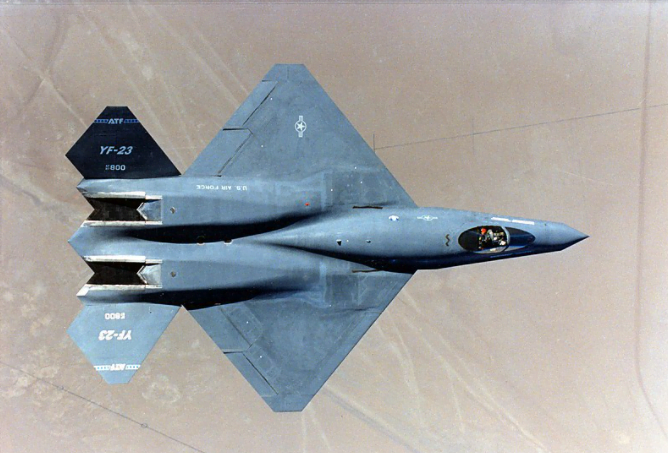Follow Us:
Share
Table of Contents:
Defense Feeds – In today we will provide a detailed explanation of one of the most impressive fighters, generally known as “the Master of the Sky”, can you guest which aircraft it is? Yes, absolutely, it is the Northrop YF-23! Let’s see what makes this fighter jet one of the best in its class!

The Northrop YF-23 prototype was one of two planes designed and built by Northrop and McDonnell Douglas as part of the US Air Force’s demonstration and evaluation program.
The development of this ship is actually the answer to the American ATF (Advanced Tactical Fighter) as a challenge proposed by the United States Air Force (USAF). The design was also the finalist in the USAF’s competition battling the Lockheed YF-22 that became its competitor.
The aircraft with the length of 20.55 m, was designed to meet USAF requirements for survivability, super cruise, stealth, and ease of maintenance. It has maximum speed of 1,260 knot at high altitude with the range nearly 3,000 miles.
The YF-23 was an unconventional-looking aircraft, with diamond-shaped wings and was powered by two turbofan engines with each in a separate engine nacelle with S-ducts, to shield engine axial compressors from radar waves.
Additionally, this aircraft was also featured with standard armament of a fixed 20mm M61 Vulcan cannon for close-in work. Also equipped with 4 AIM-7 Sparrow or AIM-120 AMRAAM medium-range air-to-air missiles as well as 2 of AIM-9 short-ranged air-to-air missiles.

Now let’s move to take a deeper look at the Northrop YF-23 and what particularly made it special.
The YF-23 unofficially known as the “Black Widow II” and is considered to be a highly capable airframes resulted in a dominant air superiority fighter that would be the first of a new generation.
It is also important to note that this aircraft is actually a supersonic “Stealth” fighter along with its Stealth capabilities, which was designed to “Super-cruise” or maintain supersonic speeds without using the aircraft’s afterburners.
Super cruising would mean this new fighter would be able to close with enemy jets at a high rate of speed without sacrificing much in the way of fuel. Therefore, the most notable place where the YF-23 had a clear advantage was in fuel range.
Furthermore, the aircraft which firstly operated on October 27, 1990, with Northrop test pilot Jim Sandberg, has a combat radius which was significantly greater. Its slightly better stealth profile, which meant that it could fly further into contested airspace (where refuelling isn’t an option).
Today, that capability would be coveted among Navy officials, as the branch continues to work toward finding ways to extend the combat radius of carrier-borne fighters.
Share
Defense Feeds
Defense Feeds is publication focusing on informing, engaging, and empowering the world by providing accurate information from defense technology.
Powered by Defense Feeds © 2025 – All rights reserved.




